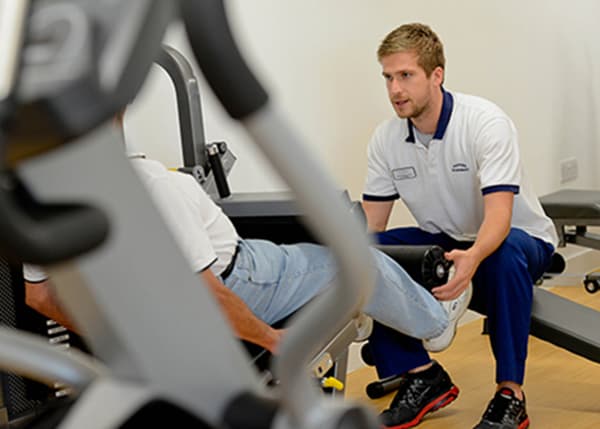“I have joined the gym but my wrists have started to ache. Why does my wrist hurt after exercise?”
Whether it is using gym equipment, kettle bells, performing martial arts or circuits, many fitness regimes involve using your hands. Some people experience tenderness or pain in their wrists when exercising or following exercise and this discomfort is usually caused by weakness, overuse and poor positioning.
What can I do to reduce my wrist pain during exercise?
The following tips could help to protect the hands and wrists from sprains, injury and long term damage when performing exercises like weight lifting:
- Warm up and stretch - Keep your joints flexible and stretched before exercise. Include the hands and wrists in your warm up and post-exercise cool down to reduce any risks of injury or strain.
- Respect pain - Exercises should not cause pain, and aching wrists are a sign you should listen to your body. Take regular breaks or plan your exercise regime to combine alternating low and high impact tasks. Avoid overuse and long periods or repetitive movement.
- Hydrate - Water aids muscle recovery and repair. Muscles that are dehydrated are more likely to ache so try to drink water during and after exercise.
- Keep wrists neutrally aligned - Keeping your forearm and wrist in straight alignment puts your wrist in the most stable position. When performing planks or press ups weight bearing through your wrist, slightly arch your outstretched hand to reduce the strain on the small joints of the hand and stabilise the wrist.
- Check equipment - Overuse and misuse of equipment can increase the risk of injury. Check the weight and size of equipment is it appropriate to your personal needs.
- Wear supports - A variety of wrist supports and tapes are available in sports shops, leisure centres and online. Straps and supports can help to stabilise the wrist or limit movement during gripping.
- Wrist stability and strengthening exercises - A strong grip improves the hold of any weights or equipment you may be using. Strengthening muscles around the wrist to “sandwich” the wrist bones supports weight bearing or lifting. It is also important to consider that your hands do not function in isolation and strengthening might also be needed in the shoulder and upper arm.

Where can I get help to improve wrist pain following exercise?
Do not suffer or continue to exercise with pain. Hand and wrist pain can make it difficult to do even simple everyday tasks, leisure activities and work.
A Hand Therapist can help to assess any possible causes for wrist pain and tell you why your hand might be hurting. Wrist and hand pain are often caused by overuse, poor posture, instability or weakness. Hand therapy can provide individual exercise programmes of wrist exercises, manual therapy, bespoke splinting and specialist advice to manage wrist discomfort or pain.





